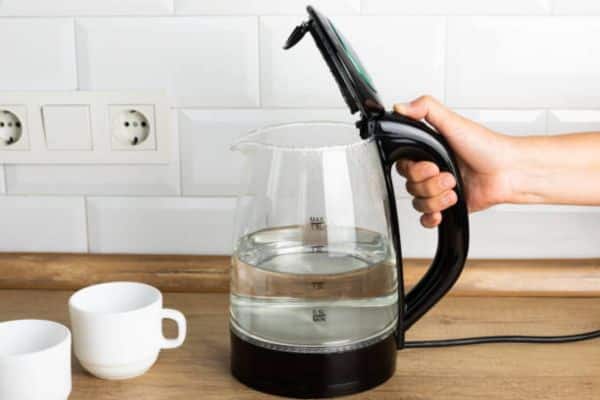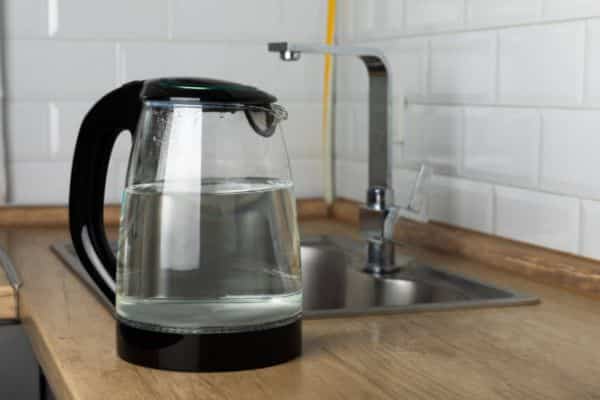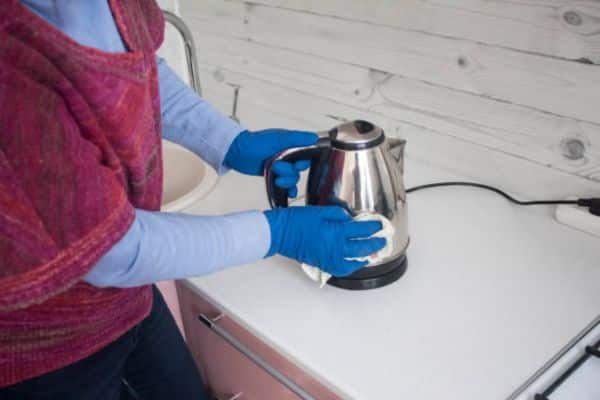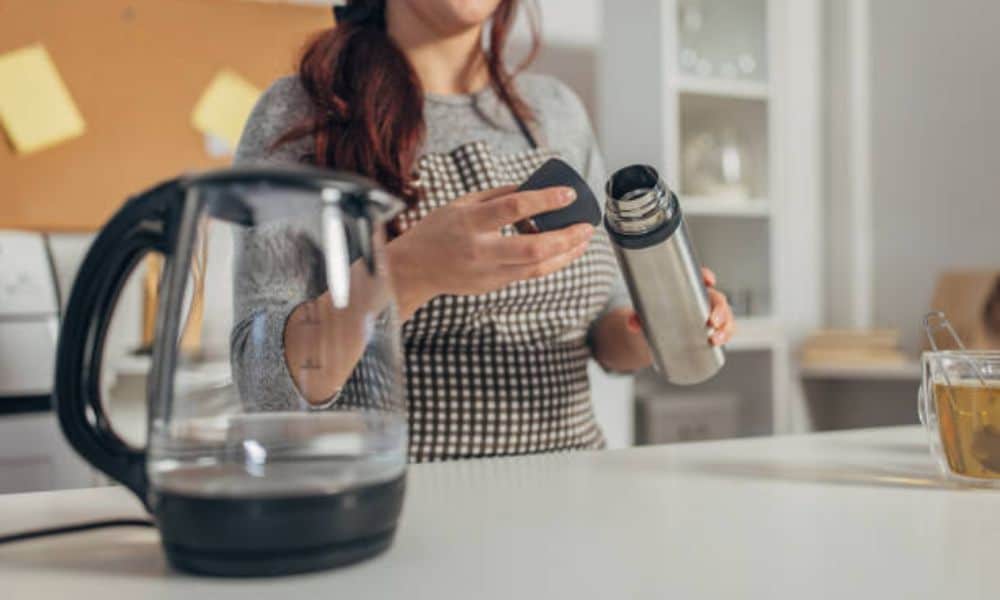Steam rose, yet my first sip tasted dull, thanks to chalky rings hiding inside my metal kettle. That small shock showed me that a spotless kettle keeps flavor bright and gear strong. A quick scrub restored sparkle, boiled faster, and cut power waste. Taste buds cheered right away. Years of brewing tests at home and on the road give me solid kettle skills. Right now you will learn how to clean Chefman electric kettle using safe pantry staples and zero harsh scent. Gather vinegar, grab a soft cloth, and enjoy bright tea today. Your kettle deserves the same simple rescue.
Signs Your Chefman Kettle Needs Cleaning
Does tea taste dull? It’s a clue. A flat or bitter flavour often means your kettle needs care. I noticed it one morning—my green tea lost its charm. I opened the lid and saw a cloudy film on the base.
White spots or chalk marks? That’s limescale. It forms from minerals in tap water. Over time, it builds up and blocks heat. Your pot may get loud or take longer to boil.
A dirty kettle uses more power and shortens its life. Clean gear lasts longer and brews better. Those who want the best non toxic electric tea kettle know this. Safe water starts with clean tools—no smell, no bad taste, just a fresh pour every time.
How To Clean Chefman Electric Kettle (Step-by-Step)
Wondering how to clean the right way? This simple method keeps it safe, fresh, and free of harsh smells. No harsh chemicals. Just common items from your kitchen shelf.
01. Unplug and Let It Cool

Always unplug first. Let it sit until the inside feels cool to the touch. This keeps things safe and protects the base.
02. Mix Your Cleaner
Fill the kettle halfway with white vinegar. Then add clean water until it reaches the max line. This mix breaks down mineral build-up without harsh sprays. It’s perfect for anyone choosing the best non toxic electric tea kettle lifestyle.
03. Boil, Then Rest

Turn the kettle on. Let the mix come to a full boil. Once it’s done, turn it off and leave it to sit for 15 to 20 minutes. This soak helps lift deep limescale.
04. Pour and Rinse
Dump the mix into the sink. Rinse the inside with clean water. I like to boil a full pot of plain water after, then pour it out. This clears any smell left behind.
05. Wipe Gently
Use a soft sponge or cloth to wipe inside and out. Avoid steel wool or rough pads. Chefman’s surface looks sharp, but scratches can shorten its life.
Bonus Tips From Experience
Hard water? Clean your kettle once a week. Soft water? Every two to three weeks is fine. The more minerals in your water, the faster limescale builds.
Use filtered water if you can. It leaves less residue and helps last longer. I switched to a basic filter jug, and my Chefman has stayed cleaner for months.
Skip harsh tools. Don’t scrape the inside with anything sharp. A soft sponge works best. Never use bleach or scented cleaners—they leave a smell and can damage the metal.
Want an easy clean? Try reusable descaling pods or natural mixes like lemon juice and water. They’re safe, simple, and keep your tea fresh with no added taste.
How to Clean Cuisinart Electric Kettle (vs. Chefman)

Both brands use quality materials like stainless steel and glass. That means vinegar and water work well for both. Fill halfway with vinegar, top with water, boil, let it rest, rinse, then wipe. Easy and chemical-free.
Cuisinart glass models need more care. Never scrub with a rough sponge—use soft cloth only. Some also have built-in filters. Take those out and clean them gently in warm water.
Chefman kettles often have a simpler build, which makes cleanup fast. Cuisinart may take longer, but both benefit from the same safe steps.
Choosing the Best Non-Toxic Electric Tea Kettle
A safe pot starts with safe materials. Look for stainless steel, glass, or BPA-free plastic. These are better for your health and won’t change the taste of your tea.
Both Chefman and Cuisinart offer non-toxic models. Many use food-grade stainless steel or borosilicate glass. These hold up well over time and don’t leach chemicals, even with daily use.
To protect those materials, clean with care. Avoid harsh tools and chemical sprays. A simple vinegar and water mix works best. It keeps safe, clean, and tasting fresh.
Clean Kettle, Better Brew

Keeping your Chefman kettle clean is easy and worth it. Just unplug, mix vinegar and water, boil, let it rest, rinse, and wipe with care. Use soft tools and skip the chemicals for safe, fresh results.
A quick clean once a week can make a big difference. Your pot will last longer, use less power, and brew better tea. Clean gear means clean taste—every single time.
FAQs
Can I use lemon juice instead of vinegar?
Yes! Lemon juice is a great natural option. It’s gentle, smells fresh, and breaks down limescale well. Just mix equal parts lemon juice and water, boil, let it sit, then rinse.
How often should I clean my kettle?
For hard water, clean it once a week. For soft or filtered water, every two to three weeks is fine. Regular care keeps it fast, fresh, and safe.
Is Chefman a non-toxic brand?
Yes, Chefman offers non-toxic models made with stainless steel and BPA-free parts. Always check the label to be sure. With proper care, it stays clean and safe for daily use.
Final Thoughts
A clean kettle means better taste, faster boils, and longer life. Whether you sip tea daily or brew only on weekends, keeping your Chefman in top shape is simple and worth it.
You don’t need harsh sprays or fancy tools. Just a little vinegar, warm water, and gentle care go a long way. It’s a quick habit with big rewards.

